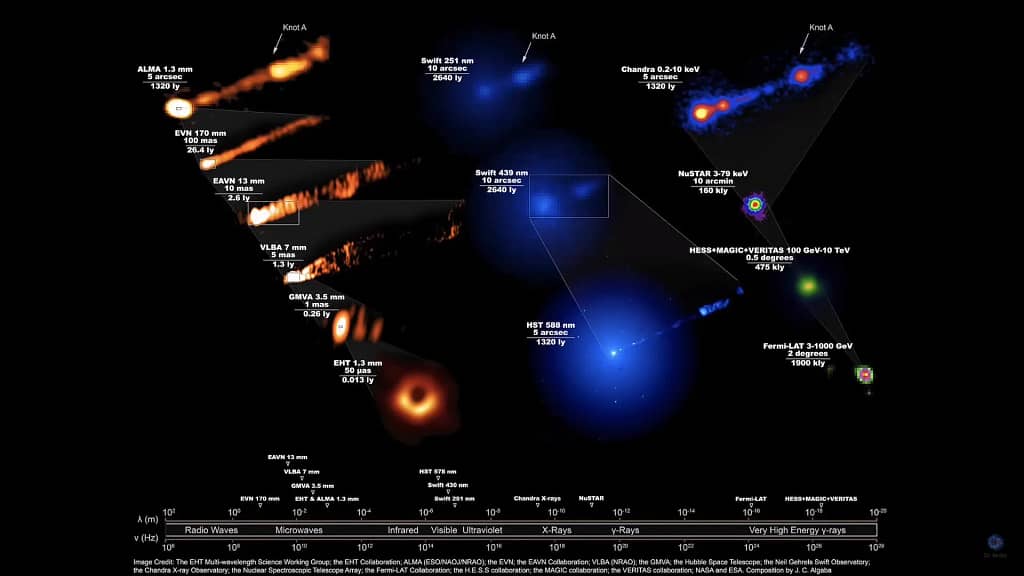The discovery of an exceptionally distant supermassive black hole by JWST challenges established theories in astrophysics, particularly regarding the formation and rapid growth of these cosmic entities. The breakthrough is detailed in a research paper by Bogden and collaborators, addressing a longstanding mystery in the field. The central puzzle revolves around the size of supermassive black holes found in the centers of galaxies, which far exceed what current theories predict. Traditionally, black holes form through supernovae, where a star’s core collapses under gravity. However, the time it takes for these processes to occur doesn’t align with the observed sizes of supermassive black holes in distant galaxies.
JWST Findings
The proposed solution introduces the concept of “direct collapse black holes.” This hypothesis suggests that, in the early universe, black holes could have formed directly from the collapse of massive gas clouds, bypassing the conventional pathway of star formation. The implications of this idea challenge the prevailing belief that galaxies form first, and supermassive black holes grow within them.
The study focuses on a specific galaxy, uhz 1, where the mass of the identified supermassive black hole appears comparable to or even surpasses the mass of the surrounding stars. This unusual characteristic suggests that the black hole may have been the initial entity, forming before the surrounding galaxy. The research draws on observations from the James Webb Space Telescope (JWST) and NASA’s Chandra X-ray Telescope. The detection involves gravitational lensing, where foreground galaxies magnify light from background galaxies, and excess X-ray emissions in uhz 1 indicate the presence of a growing black hole.
Estimating the black hole’s mass involves interpreting X-ray brightness, considering factors such as the growth rate of the black hole and the presence of dust. The calculated mass is notably high, prompting further investigation into the possibility of direct collapse of black holes.

Despite the intriguing findings, the study acknowledges several uncertainties. Accurately estimating the mass of the distant galaxy and accounting for the potential influence of dust are significant challenges. The need for spectroscopic follow-up observations is emphasized to confirm the galaxy’s distance and gather more precise data.
In conclusion, the discovery of a black hole challenging conventional theories underscores the complexities of understanding cosmic phenomena, especially in the early universe. The research pushes the boundaries of astrophysical knowledge, emphasizing the ongoing quest for more accurate observations and a deeper comprehension of the fundamental processes governing our cosmic landscape.
FAQs
Q1: What is the significance of the discovery of this distant supermassive black hole?
The discovery challenges established theories in astrophysics, particularly those related to the formation and rapid growth of supermassive black holes. It addresses a longstanding mystery regarding the observed sizes of these cosmic entities in distant galaxies, which exceed predictions based on current theories.
Q2: How does the discovery challenge existing theories?
Traditionally, black holes are thought to form through supernovae, where a star’s core collapses under gravity. However, the observed sizes of supermassive black holes in distant galaxies do not align with the time it takes for these conventional processes to occur. The proposed solution introduces the concept of “direct collapse black holes,” suggesting an alternative formation pathway involving the collapse of massive gas clouds in the early universe.
Q3: What evidence supports the hypothesis of “direct collapse black holes”?
The study focuses on a specific galaxy, uhz 1, where the mass of the identified supermassive black hole appears comparable to or even surpasses the mass of the surrounding stars. Observations from the James Webb Space Telescope (JWST) and NASA’s Chandra X-ray Telescope, utilizing gravitational lensing, indicate excess X-ray emissions in uhz 1, suggesting the presence of a growing supermassive black hole.
Q4: How was the supermassive black hole detected, and what instruments were used?
The detection involves gravitational lensing, where foreground galaxies magnify light from background galaxies. The study utilizes observations from the James Webb Space Telescope and NASA’s Chandra X-ray Telescope to identify excess X-ray emissions in uhz 1, providing evidence for the presence of a growing supermassive black hole.




